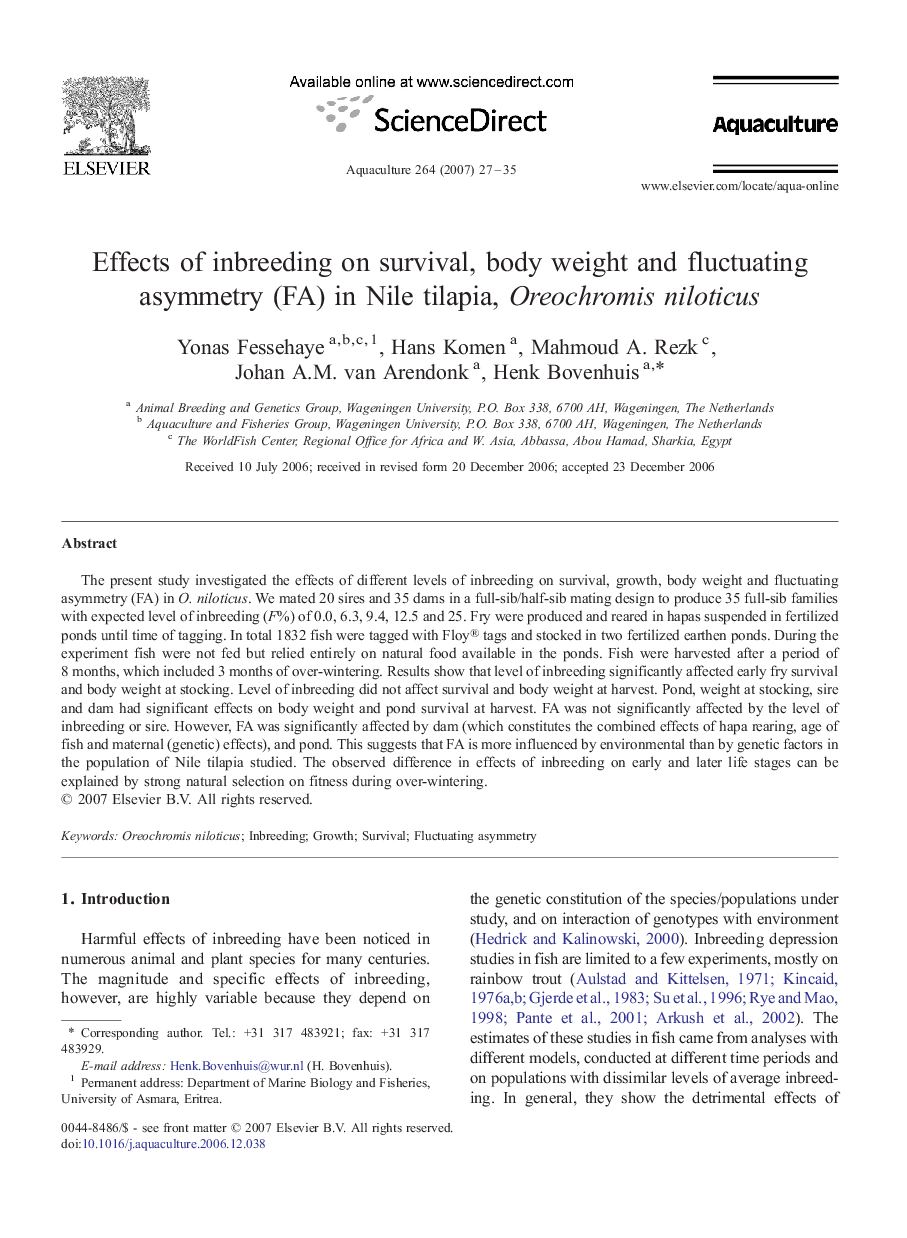| Article ID | Journal | Published Year | Pages | File Type |
|---|---|---|---|---|
| 2425359 | Aquaculture | 2007 | 9 Pages |
The present study investigated the effects of different levels of inbreeding on survival, growth, body weight and fluctuating asymmetry (FA) in O. niloticus. We mated 20 sires and 35 dams in a full-sib/half-sib mating design to produce 35 full-sib families with expected level of inbreeding (F%) of 0.0, 6.3, 9.4, 12.5 and 25. Fry were produced and reared in hapas suspended in fertilized ponds until time of tagging. In total 1832 fish were tagged with Floy® tags and stocked in two fertilized earthen ponds. During the experiment fish were not fed but relied entirely on natural food available in the ponds. Fish were harvested after a period of 8 months, which included 3 months of over-wintering. Results show that level of inbreeding significantly affected early fry survival and body weight at stocking. Level of inbreeding did not affect survival and body weight at harvest. Pond, weight at stocking, sire and dam had significant effects on body weight and pond survival at harvest. FA was not significantly affected by the level of inbreeding or sire. However, FA was significantly affected by dam (which constitutes the combined effects of hapa rearing, age of fish and maternal (genetic) effects), and pond. This suggests that FA is more influenced by environmental than by genetic factors in the population of Nile tilapia studied. The observed difference in effects of inbreeding on early and later life stages can be explained by strong natural selection on fitness during over-wintering.
